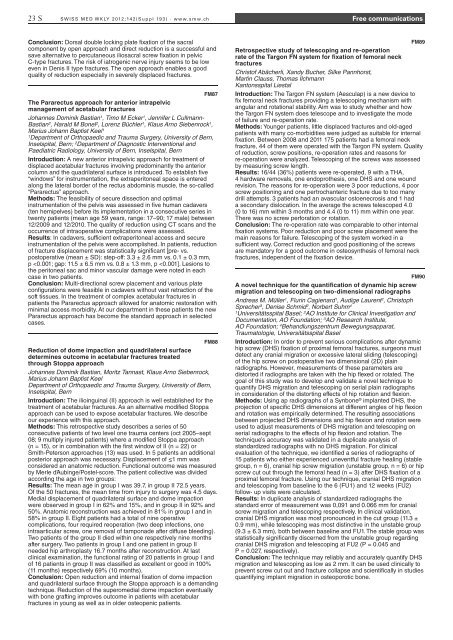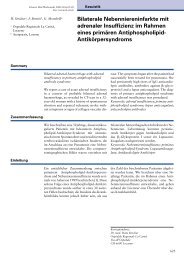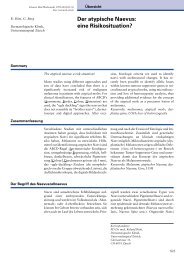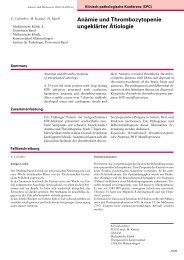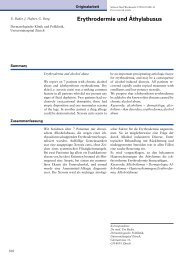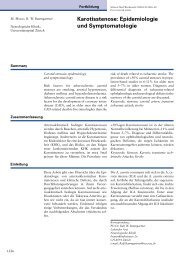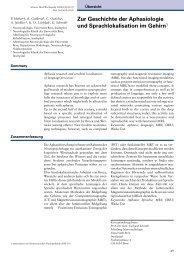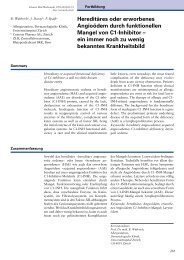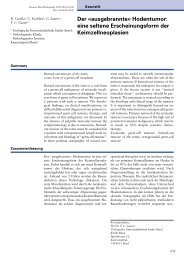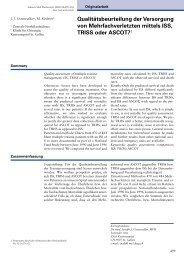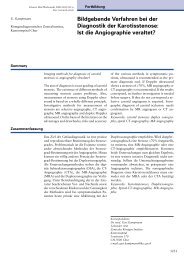SMW Supplementum 193 - Swiss Medical Weekly
SMW Supplementum 193 - Swiss Medical Weekly
SMW Supplementum 193 - Swiss Medical Weekly
Create successful ePaper yourself
Turn your PDF publications into a flip-book with our unique Google optimized e-Paper software.
23 S SWiSS Med Wkly 2012;142(Suppl <strong>193</strong>) · www.smw.ch Free communications<br />
Conclusion: Dorsal double locking plate fixation of the sacral<br />
component by open approach and direct reduction is a successful and<br />
save alternative to percutaneous iliosacral screw fixation in pelvic<br />
C-type fractures. The risk of iatrogenic nerve injury seems to be low<br />
even in Denis II type fractures. The open approach enables a good<br />
quality of reduction especially in severely displaced fractures.<br />
FM87<br />
The Pararectus approach for anterior intrapelvic<br />
management of acetabular fractures<br />
Johannes Dominik Bastian1 , Timo M Ecker1 , Jennifer L Cullmann-<br />
Bastian2 , Harald M Bonel2 , Lorenz Büchler1 , Klaus Arno Siebenrock1 ,<br />
Marius Johann Baptist Keel1 1Department of Orthopaedic and Trauma Surgery, University of Bern,<br />
Inselspital, Bern; 2Department of Diagnostic Interventional and<br />
Paediatric Radiology, University of Bern, Inselspital, Bern<br />
Introduction: A new anterior intrapelvic approach for treatment of<br />
displaced acetabular fractures involving predominantly the anterior<br />
column and the quadrilateral surface is introduced. To establish five<br />
“windows” for instrumentation, the extraperitoneal space is entered<br />
along the lateral border of the rectus abdominis muscle, the so-called<br />
“Pararectus” approach.<br />
Methods: The feasibility of secure dissection and optimal<br />
instrumentation of the pelvis was assessed in five human cadavers<br />
(ten hemipelves) before its implementation in a consecutive series in<br />
twenty patients (mean age 59 years, range: 17–90; 17 male) between<br />
12/2009 and 12/2010. The quality of reduction using CT scans and the<br />
occurrence of intraoperative complications were assessed.<br />
Results: In cadavers, sufficient extraperitoneal access and secure<br />
instrumentation of the pelvis were accomplished. In patients, reduction<br />
of fracture displacement was statistically significant [pre- vs.<br />
postoperative (mean ± SD): step-off: 3.3 ± 2.6 mm vs. 0.1 ± 0.3 mm,<br />
p


